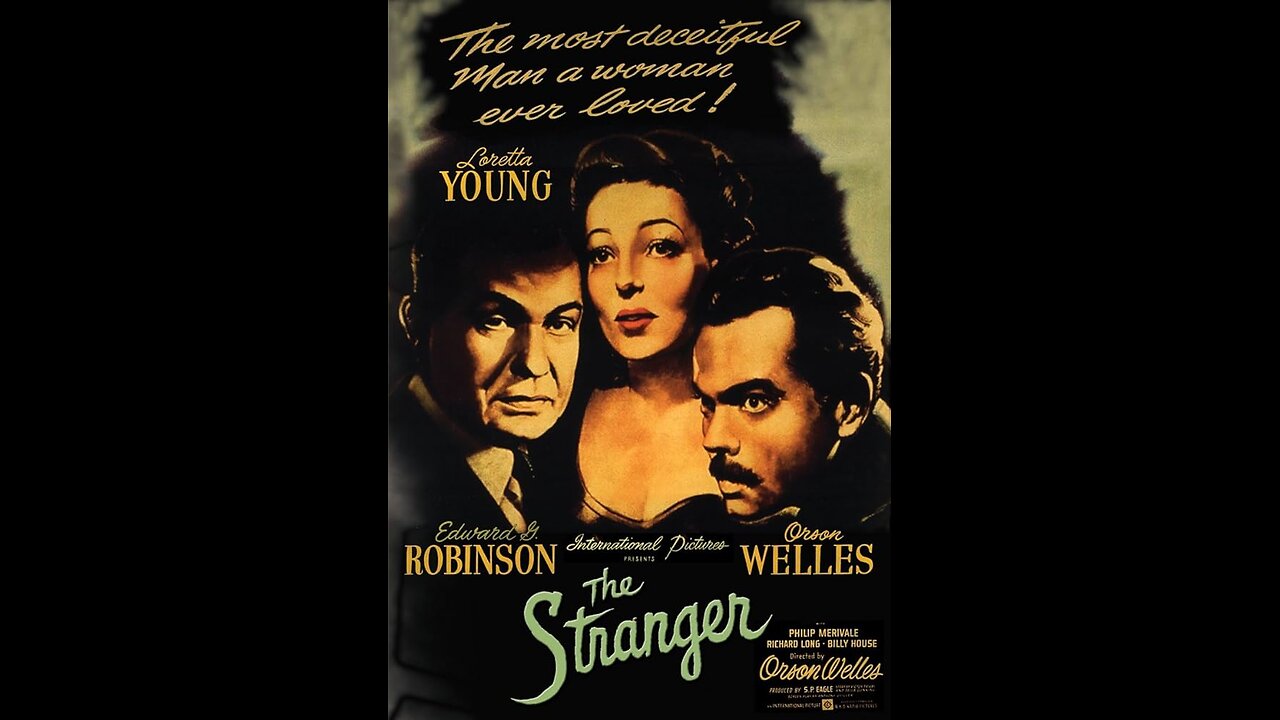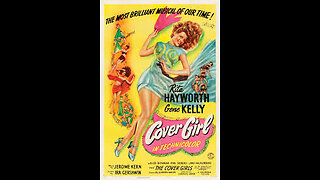Premium Only Content

The Stranger (1946) | American film noir directed by Orson Welles
"The Stranger" is a 1946 American film noir directed by Orson Welles, who also stars in the film alongside Edward G. Robinson and Loretta Young. The film is known for its suspenseful narrative, atmospheric cinematography, and exploration of post-World War II themes.
The story centers around Mr. Wilson (Edward G. Robinson), an investigator for the Allied Commission in the war crimes division. He is tasked with tracking down and bringing to justice fugitive Nazis who have escaped Europe and are hiding in the United States. Wilson becomes particularly interested in finding an elusive and mysterious man named Franz Kindler (Orson Welles).
Kindler, the architect of the Holocaust, has managed to erase all traces of his identity and has assumed a new life in a small American town, Harper, Connecticut. There, he has married Mary Longstreet (Loretta Young), the daughter of a Supreme Court justice. Unbeknownst to Mary, her husband is living under a false identity, and Wilson is determined to expose him.
As Wilson digs deeper into Kindler's past, he faces various obstacles, including the reluctance of the townspeople to believe that a respected member of their community could be a war criminal. The film unfolds as a psychological thriller, with Wilson closing in on Kindler and the tension escalating as the truth is unveiled.
"The Stranger" is praised for its taut and suspenseful storytelling, characteristic of the film noir genre. Orson Welles, known for his innovative filmmaking techniques, creates a moody and atmospheric film that explores the aftermath of World War II and the consequences of Nazi war crimes.
Edward G. Robinson delivers a strong performance as the determined investigator, while Welles, who also directed the film, skillfully portrays the enigmatic and sinister Kindler. Loretta Young provides a sympathetic and unsuspecting portrayal of Mary, who becomes entangled in a web of deceit.
The film addresses themes of guilt, redemption, and the moral repercussions of war. Welles uses visual symbolism and shadowy cinematography to enhance the noir atmosphere, creating a sense of moral ambiguity and psychological tension.
"The Stranger" was a critical and commercial success upon its release and is considered one of the notable films of the post-World War II era. It remains a compelling example of film noir, blending a gripping narrative with strong performances and atmospheric direction.
-
 1:47:01
1:47:01
Classic Films & Movies Archive
7 days agoCover Girl (1944) | Directed by Charles Vidor
223 -
 LIVE
LIVE
Steven Crowder
2 hours ago🔴 The CDC Exodus: RFK Forces Self-Purge of the Corrupt Elite
25,718 watching -
 LIVE
LIVE
The Rubin Report
1 hour agoDave Rubin Can’t Believe This Happened While He Was Off the Grid | Jillian Michaels Guest-Hosts
1,938 watching -
 LIVE
LIVE
The Mel K Show
1 hour agoMORNINGS WITH MEL K - Liberty, Privacy, Sovereignty & Justice: The Battle Ahead 9-2-25
743 watching -
 18:52
18:52
Colion Noir
1 day agoCourt Rules You Don't Need AR-15s For Self Defense, Mayor's Message If You Love Kids Ban AR-15s
37.1K148 -
 LIVE
LIVE
The Shannon Joy Show
46 minutes agoKicking And Screaming … Trump FINALLY Admits Operation Warp Speed MAY Have Been A Complete Failure
216 watching -
 LIVE
LIVE
Grant Stinchfield
32 minutes agoCOVID VAX SECRETS: BIG PHARMA PANICS AS TRUMP DEMANDS THE TRUTH!
81 watching -
 LIVE
LIVE
LFA TV
6 hours agoLFA TV ALL DAY STREAM - TUESDAY 9/2/25
5,224 watching -
 1:01:26
1:01:26
VINCE
3 hours agoShockwaves in the Swamp Over Trump's Latest Move | Episode 116 - 09/02/25
150K109 -
 1:56:57
1:56:57
Badlands Media
9 hours agoBadlands Daily: September 2, 2025
36.1K7